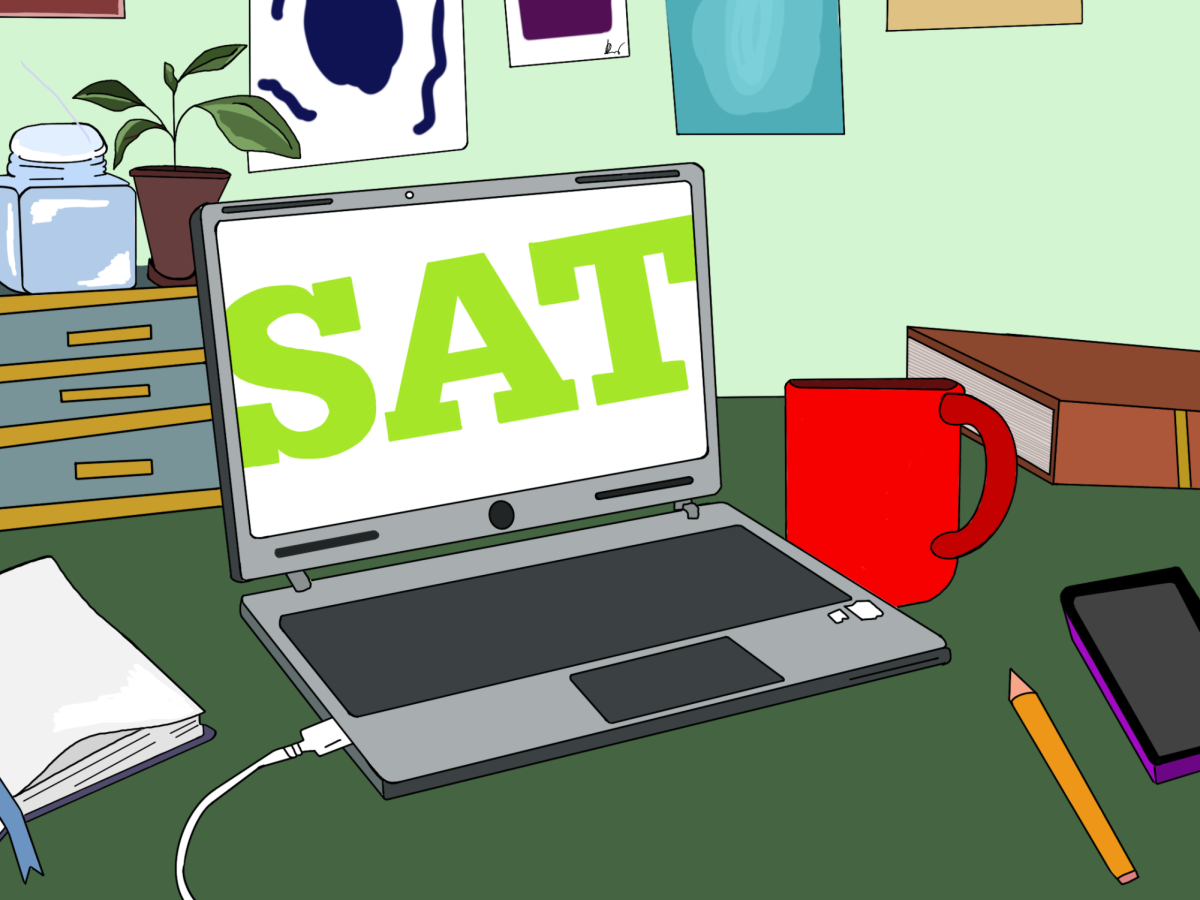For decades, high school students have taken the SAT — a standardized college admission exam. Throughout time, it has seen many changes, and as of Spring 2024, the SAT will be switching to a digital format. Will this change make the SAT easier for students?
In January 2022, College Board announced that the SAT is going digital. Beginning 2023, the SAT will be digital for international students, but for U.S. students, the format will change in 2024. The new format brings many key changes, the first being that the SAT will be completely digital. Students must take it on their laptops or school computers inside their school or at a designated testing center. Another change will be that the questions will now be adaptive. The duration will also change from about two hours rather than three, and there will be more time per question due to the questions being shortened. The math and reading sections will also be different, as calculators will now be permitted for the entire math portion and the reading passages will have only one question per passage.
This new SAT format appears to be much easier than the traditional format that has been used for years. The modernized format will be beneficial for timeliness, as test proctors and students will now be able to get in and out of their testing rooms quickly. The shorter duration and longer time given for questions will also relieve many students of time pressure.
Apart from the benefits the new format brings in terms of time, the digital SAT has many other advantages. When tracking questions, many students lose valuable time while looking for numbers on their scantron; however, the digital format can alleviate the stress many students feel with this. Additionally, the adaptive questions may also reduce the stress many students feel when it comes to the difficulty of questions.
The new SAT format will also help students who struggle with learning disabilities. The shorter duration will be beneficial for students with ADHD. Apart from this, students who struggle with dyslexia or other reading challenges will benefit from the shorter reading passages, the text-to-speech capability and the font-changing abilities.
As for the academic aspect of the exam, the changes to the math portion will be beneficial. The new access to math formulas and a calculator for the entire test will prove to be helpful tools, as they help with memorization. Many students struggle with memorizing formulas and the lack of calculators. Many argue that it is not realistic to prohibit these tools on standardized tests, as these resources are often used in real-world math problems. Implementing these things into the SAT will prove to be helpful.
With the new changes, the SAT will appear more approachable to students. The SAT is helpful to high schoolers, even those who are applying to colleges that are test-optional. This is because good SAT scores can help students earn merit-based scholarships. Although standardized tests are not a reflection of a students intelligence and academic potential, they can accurately demonstrate test-taking skills and math capabilities.
Even at test-optional colleges, a high test score can help students earn more aid. Some schools even guarantee scholarships based on specific SAT and ACT scores. So even if the school someone is applying to is test-optional, it still benefits the student to prepare for the SAT and take it. It is also recommended to do so because if a student opts out of taking the exam, other parts of their application are weighed more heavily.
The new SAT format will be beneficial for many. The new format seems less intimidating and more helpful to students, with its adaptability, shortened time and new tools. Although many high schoolers are relieved that many colleges are going test-optional, it is best to take the SAT, as it will present them with more opportunities than they realize. The new and improved SAT proves that standardized testing can adapt to the modern world, refining and opening more doors for students.











